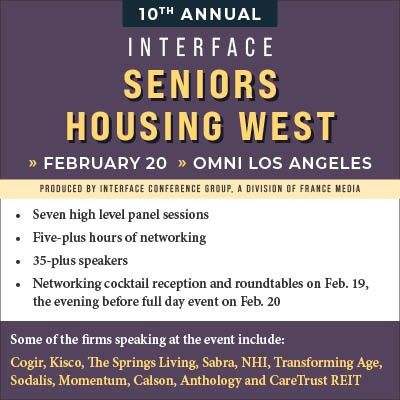By Jack Cumming
Looking at the architect’s renderings for a new life plan community, the dream can seem like utopia. The recent coinage, “life plan community,” applies here since the community laid out in those drawings with illustrative people moving about is no more than a utopia. Time tells us that the reality will be different.
Telosa
These thoughts come to mind because of Marc Lore’s dream to create a new city for 5 million in the Arizona desert. “What?” you say . . . “That’s crazy.” And maybe it is. You may not know Marc Lore, but he’s a billionaire and former Walmart President. He just may have the means to start something like the city of his dreams, which he calls “Telosa.” The projected cost is $400 billion, which pencils out to $80,000 per resident. His mission is “to create a new city in America that sets a global standard for urban living, expands human potential, and becomes a blueprint for future generations.”
Compare that mission with the promise from a new Continuing Care Retirement Community that is now in the works. That mission is to provide a community for “peace, love & happiness.” Senior living communities can seem utopian in their envisioning. It’s fun to be the utopian dreamer as Marc Lore is for Telosa and as the provider-developer is for the community of peace, love, and happiness.
The CCRC is not named here because there is no intent to embarrass anyone. Moreover, it’s a concept that is appealing. The point is that a CCRC can start off with a utopian vision, just as Marc Lore is starting with a values-driven vision for Telosa.
Practicalities
There are many pitfalls to utopian thinking, which is why they are called “utopia” meaning “no place” in the terminology first used by Thomas More in his 1516 book of that title. In this case, the utopian fallacy is evident in the notion of a cost of just $80,000 per resident. Any CCRC developer – Greystone and LCS™ leap to mind – can tell you that CCRC development costs are many times that optimistic cost estimate for Telosa.
Even with realistic cost appraisals few idealistic founding efforts sufficiently anticipate the aging of the initial resident cohort over their years of their residency. Prospective move-ins look for residents like themselves so the age of the new residents in older CCRCs rises steadily, though not as sharply as the in-place residents. A naturally occurring retirement community (NORC), usually a neighborhood, avoids this challenge because it is inherently integrated with the larger surrounding community, which mirrors the full span of humanity.
The Appeal of Newness
A sponsored, financed new CCRC arrives on the market pristine with all the bells and whistles that the sponsors and their architects believe will appeal to prospective residents. It’s a de novo business undertaking. Today a building might incorporate such popular technology as fiber optic cabling. However, business judgment is involved, and the sponsor may decide that such technology is beyond what prospective residents might expect, so they stick with more “proven” cabling. Most will forego the cost of putting cabling in conduits, which could allow ready upgrading to future cable needs including fiber optics.
Thus, the community that is built as a single campus entity in 2021 is rooted in the technical, stylistic, and lifestyle concepts of the current era. 25 years later that campus may seem dowdy, old-fashioned, and dated. Moreover, 25 years after opening the resident population will have turned over one or two times. Residents are likely to be older, and the attractiveness of today’s utopia may then seem very dystopian.
As a four-year-old, I attended the Worlds Fair of 1939-40 in Flushing Meadow Park in New York City. Its City of Tomorrow caught my fancy and triggered my imagination. Its soaring highways seemed wondrous. Today, many view those highways as an eyesore with gridlock.
But then, caught up in the joy of that experience, I spent years of my childhood creating imaginary cities in a section of dirt on the edge of a wooded lot that adjoined our home. I fell in love with utopias. Perhaps, those early flights of imagination are among the subconscious appeals that living in a CCRC provided to me many years later.
Today’s Realities
Our world has been shaken by pandemic, by a new global divisiveness, by rising rivalries among nations, and by increasing fears that tomorrow may not be as promising as today. It’s evident that the pandemic has triggered a new era in which change is accelerated and that can be disconcerting. The senior living industry thrives on optimism such as those utopian dreams that moving to a new place, a new community, will provide a better life.
Senior living providers are merchants of utopias. As we settle down into the new realities of our post-pandemic world, people are looking to find their new normality. The big question is whether that will be in the lifestyle utopias of life plan communities, or in the supportive realities of needs-based care communities, or in an amalgam of the naturally aging community beyond campus walls with the services that people need as they age.
More Questions than Answers
The takeaway from this history and reflection is that utopias can only have concrete reality for a brief moment in time. The longer view requires us to think beyond today to envision the choices of the future. In senior living, will large communal dining rooms give way to niche dining, and how can we design to prepare for that possibility? Will the preference be for villas or apartments? Will prospects want larger, more luxurious units or will the rising middle-market call for cost efficiency? How can our existing communities be restructured to meet the needs of the emerging marketplace?
These and myriad other questions are embedded in the realities with which practical business people must contend. The optimistic certainties of utopian dreaming will be superseded. That’s no reason, though, to stop dreaming. We just have to be sure that when we shape what’s utopian for today, we build in flexibility so it can appeal to the dreams of the future in an ever-changing world.
Click here to experience the optimism of the utopian 1939 World’s Fair. And click here for a report on Marc Lore’s 2021 vision of the City of the Future.





